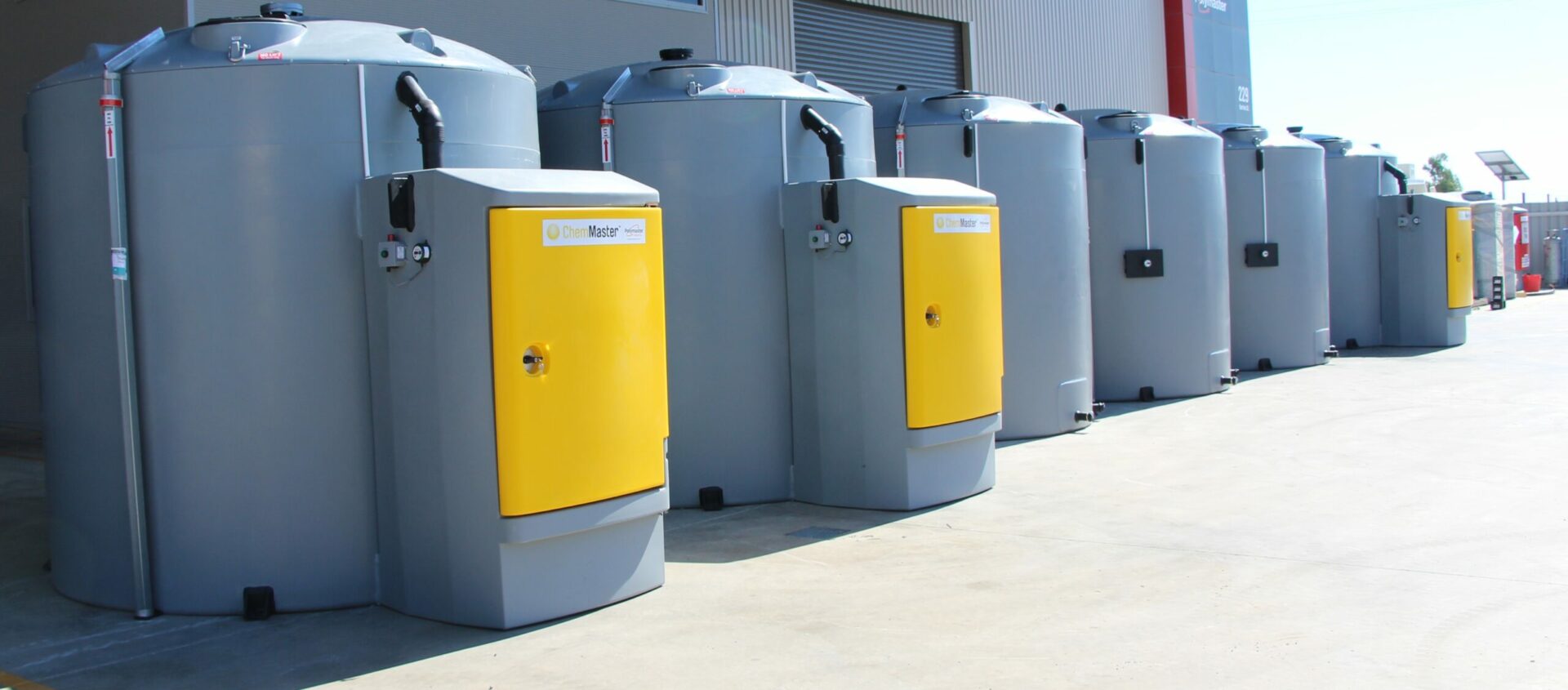
March 6, 2023
Water treatment plants are critical infrastructure for providing clean and safe drinking water to communities. One key component of the water treatment process is the disinfection of water, which is often achieved through the use of sodium hypochlorite. Sodium hypochlorite is a powerful disinfectant that is widely used in water treatment plants around the world.
In this blog, we’ll discuss how sodium hypochlorite is used in water treatment plants, best practices for storing it, and guidelines for safe handling.
What is Sodium Hypochlorite?
Sodium Hypochlorite is a corrosive chemical with the formula name NaCIO. It is a powerful oxidizer and is often used as a bleach and a disinfectant, and here at Polymaster we often supply tanks for this chemical to be used in the water treatment plants and industries.
Let’s take a look at 5 key questions that get asked when Sodium Hypochlorite is being used and how to safely store this chemical when it comes to water treatment.
How is Sodium Hypochlorite Used in Water Treatment Plants?
In the water treatment industry Sodium hypochlorite is used to purify and disinfect water. It eliminates harmful microorganisms, such as bacteria, viruses, and parasites. When Sodium Hypochlorite is added to water it starts a process called chlorination. This process is commonly used in municipal water systems, swimming pools or other water sources to ensure the water is safe to drink and use for humans and the environment.
It can also be used to remove things such as dissolved iron, manganese, and hydrogen sulphide from the water. These are substances that give the water an unpleasant taste and odour, they can also stain clothing and fixtures.
It also controls algae and other organic growth in reservoirs, water tanks, and other water storage facilities.
The overall dosage of Sodium Hypochlorite is based on the condition of the water being treated and the level of microorganisms within the water. This is usually dosed in small amounts with the chlorine residue being monitored to maintain a safe level.
What is the Best Way to Store Sodium Hypochlorite?
Sodium hypochlorite is a highly reactive and corrosive chemical that requires special handling and storage. It’s important that it’s stored within a container that is resistant to corrosive chemicals. This means within a tank or container that is built for the purpose of holding aggressive chemicals.
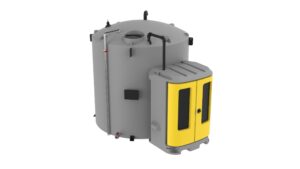
Polymaster Self-Bundled and process tanks are excellent for storing corrosive chemicals such as Sodium Hypochlorite. Our tanks have a specific gravity of 2, even though you only need up to 1.5SG and are UV stabilised. These tanks are chemical resistant and are not prone to corrosion that can occur when storing a chemical like this one.
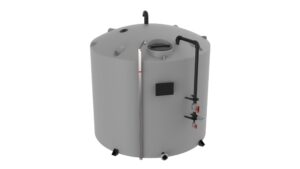
If you were to put this chemical within a normal poly rainwater tank with a lower SG of 1 it would essentially dissolve the poly and you’d be left with leaks and need to find new storage.
Best practices for storing Sodium Hypochlorite.
- Store sodium hypochlorite in a cool, dry, and well-ventilated area away from direct sunlight
- Use containers made of compatible materials, such as our 7080 chemical grade to store sodium hypochlorite.
- Store sodium hypochlorite separately from other chemicals, particularly acids, which can react with it and cause dangerous reactions.
- Ensure that sodium hypochlorite containers are tightly sealed and labelled with the proper hazard warnings.
Polymaster has a dosing skid that can assist to control the flow rate of Sodium Hypochlorite used to treat the water within any water treatment set-up. The dosing skids offered by Polymaster meet or exceed water treatment authority specifications. The systems allow direct PLC (SCADA) communication allowing fill safety, level reporting and flow adjustment.
It is important to regularly inspect and check your tank for any signs of damage or wear that may occur and get them repaired immediately.
What Should Not be Stored with Sodium Hypochlorite on site?
When it comes to storing Sodium Hypochlorite, what you are storing it with is just as important as you can cause serious harm to people on-site or the environment around you. Sodium hypochlorite should not be stored with acids or any other chemicals that can react with it.
The following chemicals should not be stored with sodium hypochlorite:
- Other acid-based chemicals e.g. Sulfuric and Nitric, as Sodium Hypochlorite comes into contact it can release a toxic chlorine gas which can cause serious respiratory problems.
- Any kind of organic compound such as oil, gas or alcohol as chlorine gas can be released and create a fire hazard.
- Even storing Sodium Hypochlorite with certain metals such as iron, aluminium, and zinc because these metals can also create serious fire hazards.
What are the Chemical Storage and Handling Guidelines for Sodium Hypochlorite?
When it comes to the storage and handling of Sodium Hypochlorite it’s important that it is handled safely, and that everyone on-site is kept safe. Here are a few guidelines to follow to keep your workplace safe:
- Store the chemical in its own designated area, away from other chemicals and direct sunlight. If Sodium Hypochlorite is exposed to direct sunlight, it can degrade quickly causing the chemical to lose its’ effectiveness as a disinfectant.
- Regularly check the solution for any kind of discolouration as this can indicate degradation of the chemical.
- With any type of corrosive chemical using the appropriate personal protective equipment (PPE) such as gloves, goggles and face shield is a must, Sodium hypochlorite is no different.
- Always handle sodium hypochlorite with care and avoid splashing or spilling it.
- Avoid inhaling sodium hypochlorite fumes or mist, which can cause respiratory irritation and other health problems.
- Do not mix sodium hypochlorite with any other chemicals or substances without first consulting a qualified professional.
It’s important to highlight that guidelines may vary depending on the specific water treatment process and location of the site. Always be aware of your site’s regulations and requirements when it comes to water treatment.
Sodium hypochlorite is an essential component of water treatment plants that helps ensure the delivery of safe and clean drinking water to communities. Proper storage and handling of this powerful disinfectant is crucial to maintain a safe and healthy working environment for water treatment plant employees and protecting the public from potential health hazards. By following the guidelines outlined in this blog, water treatment plant operators can ensure the safe and effective use of sodium hypochlorite in their facilities.
Need storage for your Sodium Hypochlorite? You can check another blog of ours that highlights 4 key reasons why Sodium Hypochlorite should be stored in a chemical tank and not just a poly rainwater tank here – https://www.polymaster.com.au/news/why-cant-i-store-sodium-hypochlorite-in-a-rainwater-tank/
We also have additional resources available on all our chemical tanks, dosing skids and accessories such as:
- GA/PDF drawings for all tanks.
- Step files to easily incorporate into your CAD files.
- Datasheets on each tank, including different SG and Chemical Grade materials.
Our chemical team are happy to help you navigate through your requirements. Simply call 1300 062 064.
More Similar News
View all News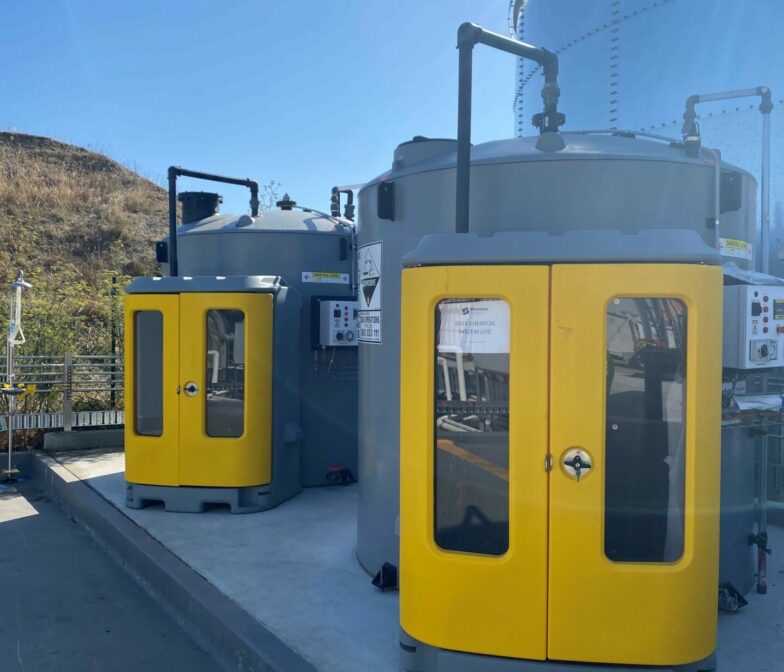
The Ultimate Guide to Clean in Place (CIP Process)
Whether you’re a manufacturer in the food and beverage industry or a pharmaceutical company, The Cleaning-in-Place (CIP) process...
Read More

7 Reasons Why You need a Polymaster Dosing Skid
Polymaster has removed some mystery that surrounds dosing skid design.
When you strip everything back, a dosing skid is...
Read More
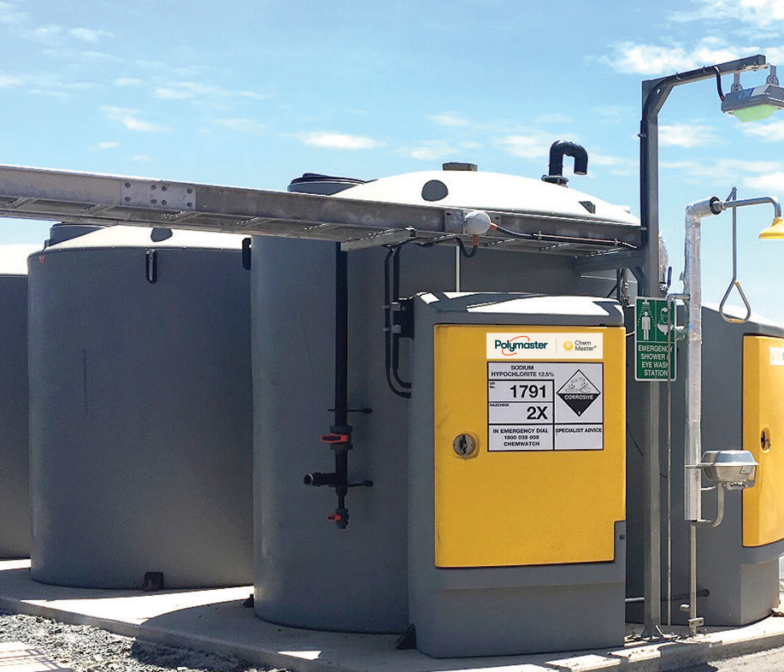
Why a Self-bunded tank outperforms a Single-Walled Tank!
Historically, bulk chemical storage on-site consisted mainly of a large concrete bund encasing a variety of single-walled tanks....
Read More
